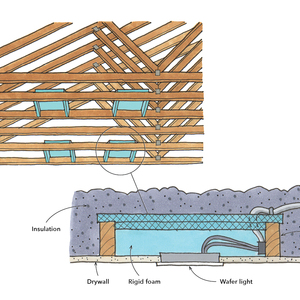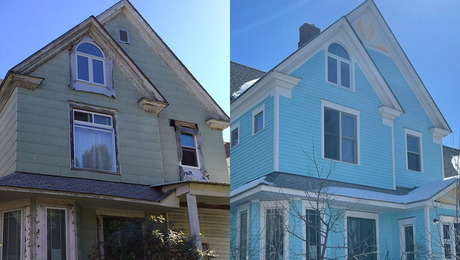Air currents are thought to be too unpredictable to be individually described or engineered. For the past five years, however, I have been exploring the convection flow within houses. Though I’ve used chart recorders and thermocouples to study currents, one simple but effective indicator of air movement is a lighted cigarette. Drafts coming into a house are apparent because we can feel them, but air leaving the house is harder to detect and remedy. By lighting a cigarette and walking slowly around a room, you’ll know immediately where you’re losing heat by the direction of the smoke. You can also gauge the relative effectiveness of your window glazing this way. If the smoke drops sharply in front of the glass, you are witnessing sheeting, a downward convection or flow due to the cold your glazing is conducting. The faster the downward flow, the lower the R-value of the window. The smoke is also useful for determining the general circulation of heat throughout your house; by opening or shutting doors, you can get a good idea how most effectively to control the heat within it. Air is really very orderly, and we should consider its movements within buildings when designing them.
Philip F. Henshaw, Denver, CO





























